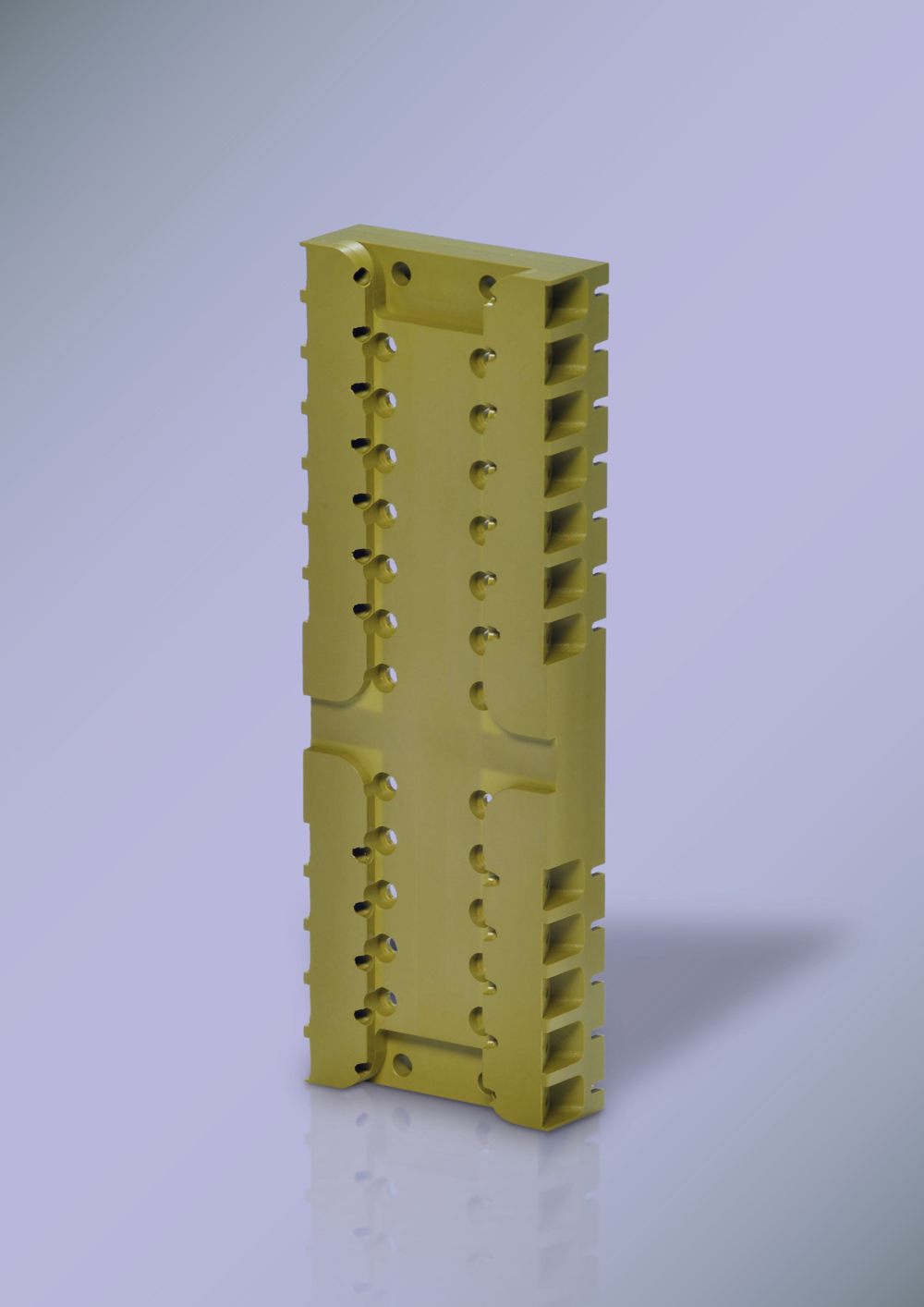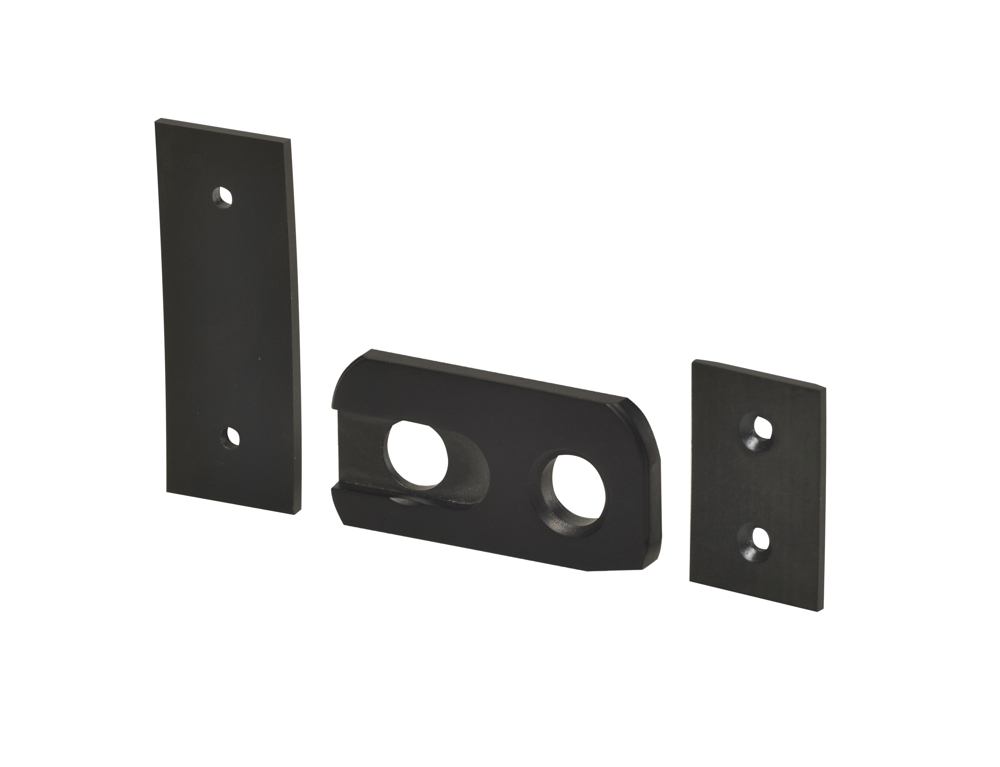Fast paced thermoplastics

Ed Hill hears from Quadrant about the latest developments of its thermoplastic composites for aerospace interiors.
The use of composite/plastic materials for aircraft interior applications has grown over the years but to deal with the anticipated ramp-ups required by the OEMs the processing of these materials needs to be faster.
Quadrant believes the wider use of its thermoplastic materials is the answer. The company has been supplying the aerospace sector with thermoplastic composite materials for many years. It products are used in applications such as structures, engines, control systems and interiors.
In 2013 the company was acquired by Mitsubishi Plastics and it is now part of the all-encompassing Mitsubishi Chemical Corporation.
Frank Johänning, Quadrant’s global market manager, aerospace and transportation comments: “Mitsubishi Chemical Corporation is the amalgamation of Mitsubishi Chemicals, Mitsubishi Plastics and Mitsubishi Rayon. In the past it was predominantly a company very much focused on material technology, but they realised that they needed a greater emphasis on certain industry sectors and aerospace is one of these strategic sectors. Currently we are organising the various businesses from an industry perspective.
“At Quadrant we specialise in semi-finished goods, for machined parts from stock shapes. We also produce interior materials that pass FST compliance regulations. These have been in the market for some time but now we are taking Mitsubishi Chemical Technology, and Quadrant technology and merging the two for use in more structural applications.”
A whole new generation

Quadrant has used its technology for thermoplastic processing for automotive processes and combined it with Mitsubishi compound and fibre technology to generate a new class of semi-finished goods, for structural materials, particularly for the interior of aircraft.
A result of this collaboration is the introduction of Quadrant’s KyronTEX high performance thermoplastic composite for the aerospace industry, which uses glass and carbon fibre as the main reinforcement material.
“There is a trend for more glass reinforcement as opposed to carbon fibre to avoid corrosion when in direct contact with metal,” Johänning explains. “Glass fibre is not only good for providing an attractive surface finish but when in direct contact with metal, does not facilitate corrosion as a carbon containing material can do. However, our carbon fibre products are still available where their use is most beneficial.”
Glass fibre materials may not be as high performing in strength and low weight as carbon fibre but in certain situations, they can be more cost-effective and still perform to the required parameters.
“With a glass woven fabric, you can achieve similar properties to a random carbon fibre composite. If you use a high-performance glass fibre the cost difference compared to a recycled carbon fibre is not that significant. The main factors are the difference in performance (weight and strength). Other considerations such as cost, processing efficiency, non-corrosive properties and fire resistance have to be considered.”
To include greater strength properties Quadrant can also produce materials with a carbon fibre core and glass fibre surface.
Most of Quadrant’s interior materials are based on a Polyetherimide (PEI) polymer with a wide range of random reinforced fabric materials and woven fibre reinforced materials available.
One of the biggest advantages thermoplastic materials offer aerospace compared to thermoset materials is flexibility and speed of processing according to Johänning.
He says: “If you have to store material in a fridge with a limited shelf life that involves a lot of additional cost. However, thermoplastics have the potential to be quickly processed and easily stored. You can take them off the shelf and process them.
“We have introduced what could be described as a ‘cafeteria’ type system where we have standard semi-finished goods, that users can combine and selectively reinforce, to make the required parts from standard materials using a thermoplastic process.”
Far faster forming
Quadrant’s customers are under pressure from the OEMs to reduce cost, but also provide more customised designs for airlines which is a difficult combination. The biggest area where savings can be made is in the processing. However, according to Johänning a larger volume of parts needs to be produced to make the investment in thermoplastic processing equipment worthwhile.
“The thermoplastic moulding process requires high temperature equipment, which can be an investment hurdle but once a critical mass has been reached for parts then it can be justified.
“Thermoplastic materials can deliver the rates that the OEMs need for the next generation of aircraft if they design in a more modular way. If design for cost is implemented correctly then it is possible to achieve the part volumes necessary and the future for thermoplastics is very promising.”

Johänning believes there are still many areas where thermoplastic composite materials can bring benefits to aircraft interiors.
“Behind the walls of the cabin there is still a lot that can be done. For example, flooring, currently traditional materials are used that can vibrate and are sensitive to impact. It may be possible to make parts that combine both the functional and the structural. They could be made from a fully integrated thermoplastic systems that could also include decoration which would be easier to repair.
“The ability to repair interiors is a big issue for the industry as it involves a lot of cost. If you use materials that are easier repair then that will be of great interest to the airlines who have to absorb that cost.”
So, can thermoplastics components be manufactured at a rate the can keep up with the ramp-up demands of the future?
Johänning says: “In the aerospace sector during development and early production you have to manufacture at a low capacity for a long time before you can fully utilise faster processes. That means there are difficult return on investment calculations that have to be made.
“However, when it comes to structural components there is a fear that there is not enough capacity in the market, but the market’s capacity to meet demand goes hand in hand with how manufacturing technology develops. If you can increase the speed of the manufacturing process that is very important because with increased speed, and the opportunity to scale up that process, you can manage the capacity required.”
And with the collaboration of Mitsubishi Chemical, Quadrant can also explore the properties of both thermoplastic and thermoset solutions.
Johanning says: “I think the share of the thermoplastic market will grow in aerospace, but thermosets will be continued to be used for some time. Thermosets are very widely used and there is a great deal known about their properties.
“In the future, manufacturers will not be so concerned about the difference in the resin systems, they will talk more about differences in processing e.g. in autoclave, out of autoclave, heated tooling etc. These are all applicable for both thermoplastic and thermoset products. The choice of the resin system will be a secondary concern.”
And Quadrant’s backing from Mitsubishi Chemical means it is in a strong position to develop new composite materials and processes to meet demand not only for interiors but also for engines, structures and other systems.
“We have access to a very wide pool of technology and excellent support from internal resources from a global supplier if we want it. We also have more control right from the base chemicals to the finished product for our quality control. A lot of Mitsubishi chemistry is already used in aerospace applications and there is a strategic advantage to being linked to a large global supplier, that carries a lot of value with our customers.”












